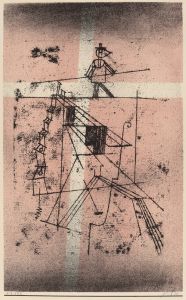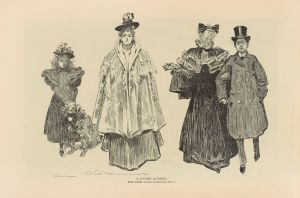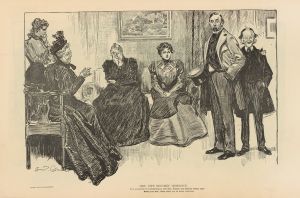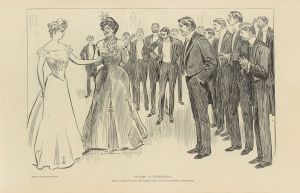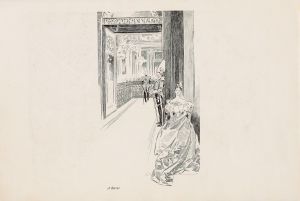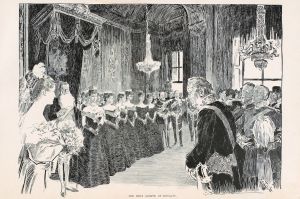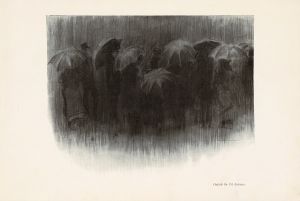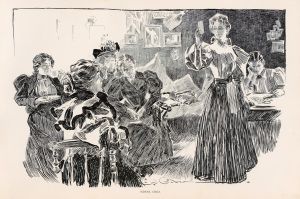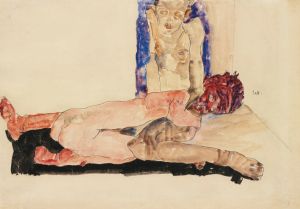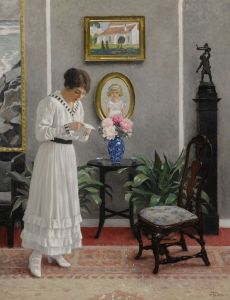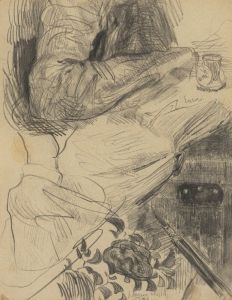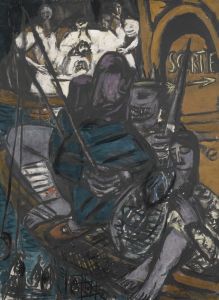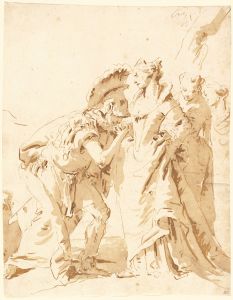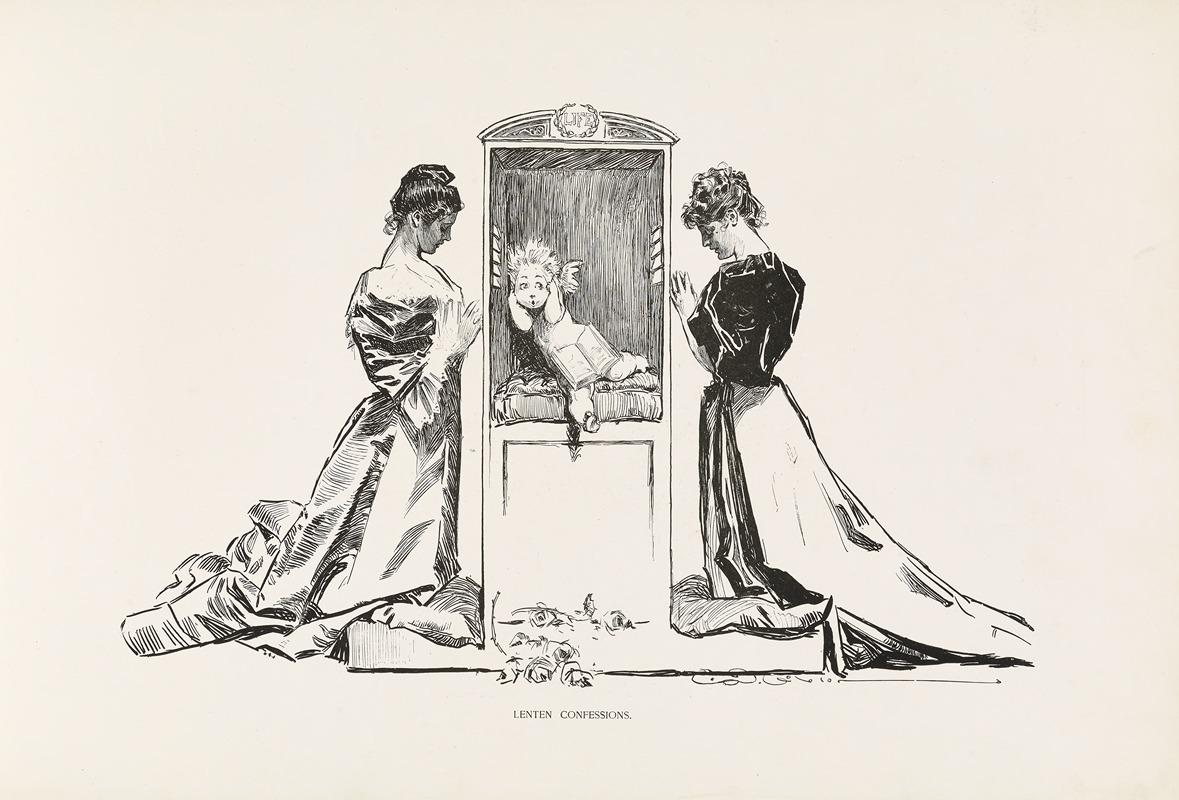
Lenten Confessions
A hand-painted replica of Charles Dana Gibson’s masterpiece Lenten Confessions, meticulously crafted by professional artists to capture the true essence of the original. Each piece is created with museum-quality canvas and rare mineral pigments, carefully painted by experienced artists with delicate brushstrokes and rich, layered colors to perfectly recreate the texture of the original artwork. Unlike machine-printed reproductions, this hand-painted version brings the painting to life, infused with the artist’s emotions and skill in every stroke. Whether for personal collection or home decoration, it instantly elevates the artistic atmosphere of any space.
Charles Dana Gibson's "Lenten Confessions" is a black-and-white illustration created by the renowned American artist and illustrator Charles Dana Gibson (1867–1944). Gibson is best known for his creation of the "Gibson Girl," an iconic representation of the idealized American woman during the late 19th and early 20th centuries. His works often appeared in popular magazines of the time, such as Life, Harper's Weekly, and Collier's Weekly, and were celebrated for their wit, elegance, and social commentary.
"Lenten Confessions" is one of Gibson's many illustrations that capture the social dynamics and cultural norms of his era. The artwork depicts a scene of interaction between a man and a woman, rendered in Gibson's signature pen-and-ink style. The title, "Lenten Confessions," suggests a thematic connection to the Christian season of Lent, a period of reflection, repentance, and confession observed by many denominations. However, the specific narrative or context of the illustration is not explicitly documented in historical records.
As with many of Gibson's works, "Lenten Confessions" likely reflects the social mores and gender roles of the time, using humor or irony to comment on human behavior. Gibson's illustrations often portrayed women as confident, intelligent, and fashionable, while also exploring the complexities of relationships between men and women in the Gilded Age and Progressive Era.
The exact publication date and original context of "Lenten Confessions" are not widely documented, but it is consistent with Gibson's broader body of work, which spanned from the late 19th century into the early 20th century. His illustrations were immensely popular during his lifetime and remain significant as cultural artifacts that provide insight into the societal attitudes and aesthetics of his time.
Charles Dana Gibson's influence on American art and culture was profound, and his works, including "Lenten Confessions," continue to be studied and appreciated for their artistic merit and historical significance.





